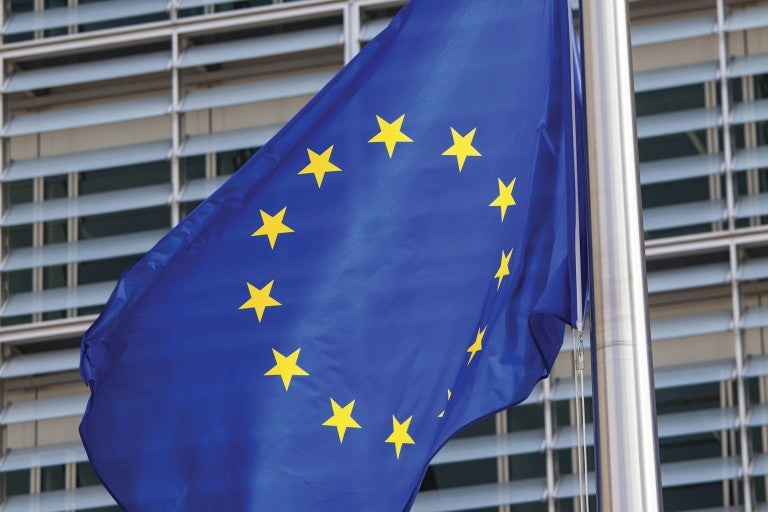June 28, 2015 — Lviv, Ukraine
An international coalition of organizations led by AJC will dedicate memorials at five Holocaust mass grave sites in Ukraine in a series of ceremonies tonight through Tuesday. The five sites -- Rava Ruska, Kysylyn, Ostrozhets, Bakhiv and Prokhid - are within a 200-kilometer radius of Lviv, in former Eastern Galicia and Western Volhynia.
German Parliament Vice-President Edelgard Bulmahn, Ukrainian Rada Deputy Speaker Oksana Syroid, U.S. Ambassador to Ukraine Geoffrey R. Pyatt, and German Ambassador to Ukraine Dr. Christof Weil are among the speakers who will address the opening ceremony in the western Ukraine city of Lviv tonight.
AJC, the global Jewish advocacy organization, initiated Protecting Memory five years ago as a model project to encourage protection of Holocaust mass grave sites and spur further research into mass shootings of Jewish victims during the Holocaust.
"The Protecting Memory initiative can expand significantly our understanding of the Holocaust," said Deidre Berger, Director of the AJC Berlin Ramer Institute for German-Jewish Relations. "Jews were not murdered only in gas chambers but also in fields, pits, ravines and swamps, where they were shot point-blank by German mobile killing units, working with subordinate auxiliary units."
In Ukraine alone, an estimated one million Jews died in mass shootings by German Nazis and their helpers. Berger, together with Rabbi Andrew Baker, AJC Director of International Jewish Affairs, initiated and coordinated the project.
"The fact that this model project was made possible by funding from the Bundestag and the German Federal Foreign Office is a welcome sign of acknowledgement by the German government of ongoing responsibility for confronting the history of the Holocaust," said Baker.
The five sites were first identified by Father Patrick Desbois. His Paris-based organization Yahad-in Unum has documented hundreds of Holocaust mass grave sites in Ukraine and other eastern European countries. Desbois will speak at the Rava Ruska memorial dedication, the first site he uncovered a decade ago when he began to identify and record mass grave sites.
Local awareness of the Protecting Memory project was encouraged through educational programs conducted by the Ukrainian Center for Holocaust Studies. "Young people conducted research into Jewish life and the Holocaust in western Ukraine," said Berger. 'Witnessing young Ukrainians rescuing memories and building bridges to Jewish life and history in Ukraine has been deeply moving." Local officials, teachers, pupils, and religious leaders will participate in each of the memorial dedications.
Five years ago, when the project began, the sites were overgrown and largely unmarked, typical for the majority of Holocaust mass grave sites. Each of the five sites now has clearly delineated borders, ground cover to protect the mass graves, a memorial stone commemorating the murdered Jewish men, women, and children, and markers recalling the history of the once vibrant local Jewish communities. Between 500 and 8,000 people were killed at each location.
"These five memorial sites are models for the protection of Holocaust mass graves," said Baker. "The lessons learned about the process of creating local memorial sites can inspire others seeking to protect neglected mass grave sites and to rescue the rich history of Jewish life in Ukraine."
"Education about the Holocaust and Jewish life is particularly important at a time when Ukraine is striving to anchor ever more firmly democratic standards of tolerance and human rights," Berger added.
The AJC-led Protecting Memory coalition includes the Conference of European Rabbis, Committee for the Preservation of Jewish Cemeteries in Europe, Ukrainian Center for Holocaust Studies, Ukrainian Jewish Committee, and Yahad-in Unum, with special thanks to the Volhynian Jewish Community. The project work was conducted by a team of experts based at the AJC Berlin Ramer Institute for German-Jewish Relations.
Yahad provided key geographical information and research about the memorial sites.
The Ukrainian Center for Holocaust Studies designed exemplary teacher training and local teacher-student education programs to accompany the memorial construction, and provided critical historical research and background.
Experts from the Committee for the Preservation of Jewish Cemeteries in Europe, working with the Conference of European Rabbis, supervised construction at each site in accordance with Jewish tradition.
The Ukrainian Jewish Committee helped gain support for the project in the Ukrainian parliament and society.
In 2004, AJC, in partnership with the Polish government, dedicated the Belzec memorial and museum, where, during a nine-month period in 1942, the Nazis murdered an estimated 500,000, and then made every effort to eliminate any trace of the death camp.


